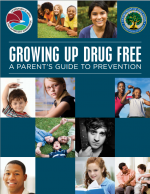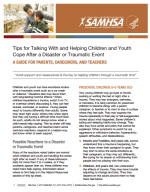
Family and parents influence the academic, social and emotional development of children, which can enhance and improve their educational experiences and outcomes.
Family and parents are critical for the healthy development of their children; happy, healthy children have a positive impact on the climate of the school, resulting in improvement in academic outcomes.
Families are more likely to have children who experience a positive school climate and have high levels of academic achievement when they are knowledgeable about their children’s school and experiences at school, have consistent contact with their children’s teachers, and hold staff accountable for maintaining a positive, healthy climate. Families can help improve the climate of their children’s school by actively recruiting other families to become involved, and by reinforcing academic, social, and emotional lessons learned at school in the home.
Parents and school staff must work together to support and improve the learning, development, and health of children and adolescents. Parent and family partnerships with schools can promote positive behaviors among children and adolescents. For example, involving parents as volunteers greatly enhances student engagement, school connectedness, and an overall feeling of well-being and confidence for both parent and child. School safety and support are directly impacted by parent volunteers. By including parents and family members in the school environment helps create a sense of familiarity and connectedness for students and staff. Having volunteers in school settings like the library, cafeteria, and classroom assist with burden or lack of resources. It also reduces the potential dangers and uncertainty that are related to school safety. When parents and schools work together, they can deliver clear, consistent messages to children and encourage the development of positive health and academic behaviors.
To increase parent engagement in school, schools must make a positive connection with guardians and family members. Beyond volunteering, family members can engage with schools and staff during after-school activities, social events (in person and online), and teacher-parent conferences and meetings. This allows families to contribute to the relationships staff create with students inside and outside of the classroom.
Hamlin, D., & Li, A. (2020). The relationship between parent volunteering in school and school safety in disadvantaged urban neighborhoods. Journal of school violence, 19(3), 362-376.
Hara, S. R., & Burke, D. J. (1998). Parent involvement: The key to improved student achievement. School Community Journal, 8(2), 9–19.
Hughes, J., & Kwok, O. (2007). Influence of student–teacher and parent–teacher relationships on lower achieving readers’ engagement and achievement in the primary grades. Journal of Educational Psychology, 99(1), 39–51.
Jeynes, W. H. (2003). A meta-analysis: The effects of parental involvement on minority children’s academic achievement. Education and Urban Society, 35(2), 202–218.
Pinquart, M. (2016). Associations of parenting styles and dimensions with academic achievement in children and adolescents: A meta-analysis. Educational Psychology Review, 28(3), 475-493.
Willms, J. D., & Somers, M. (2001). Family, classroom, and school effects on children’s educational outcomes in Latin America. School Effectiveness and School Improvement, 12(4), 409–445.
Yau, P. S., Cho, Y., Shane, J., Kay, J., & Heckhausen, J. (2021). Parenting and Adolescents’ Academic Achievement: The Mediating Role of Goal Engagement and Disengagement. Journal of Child and Family Studies, 1-13.


